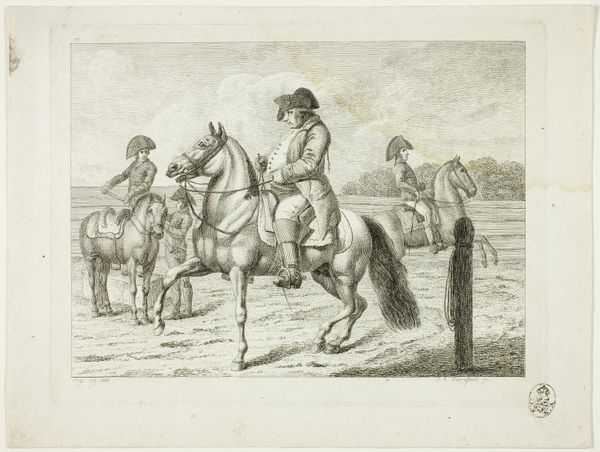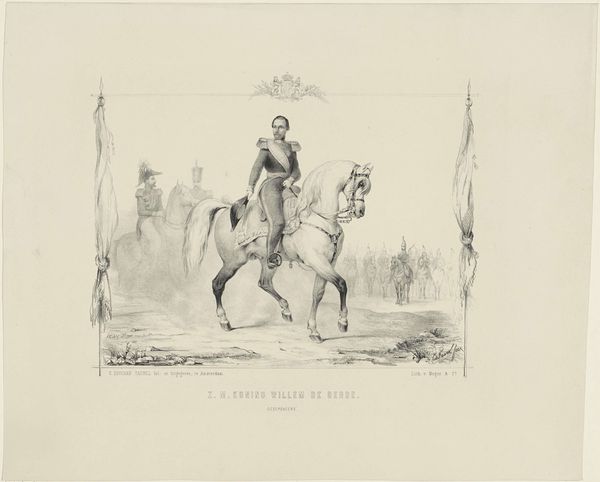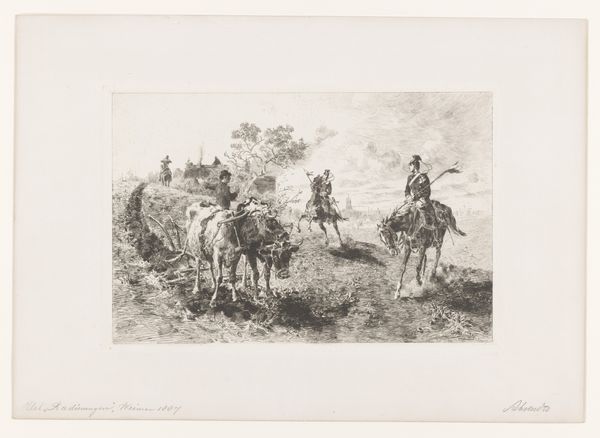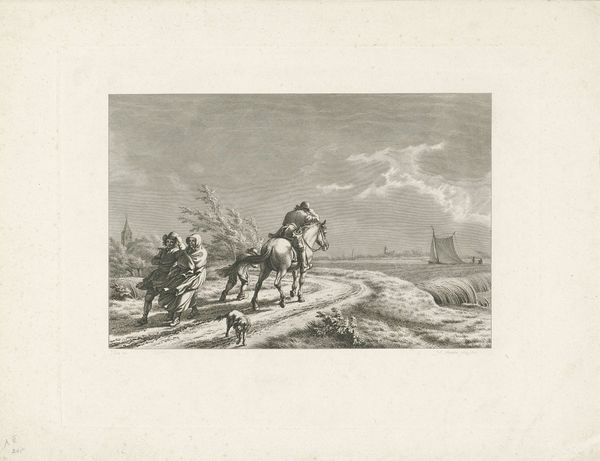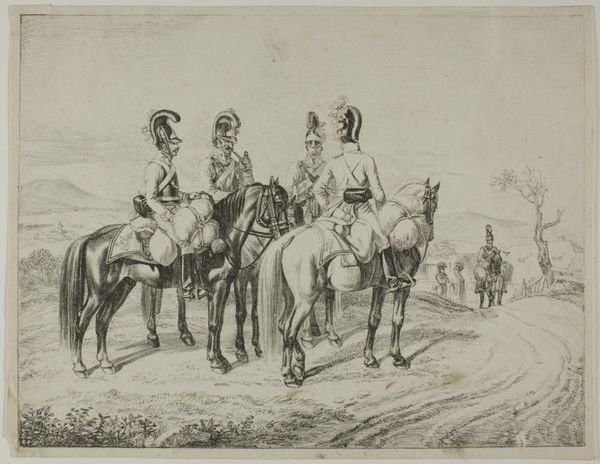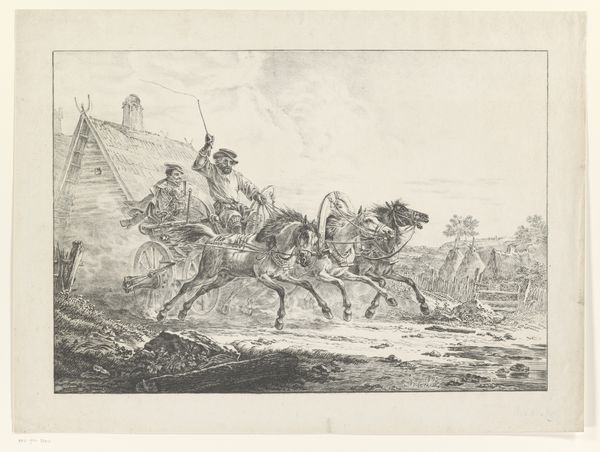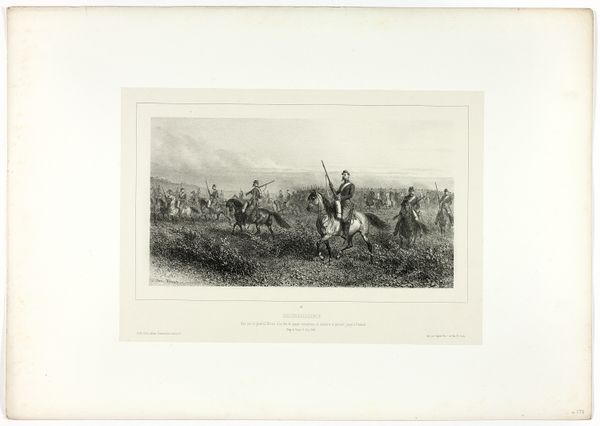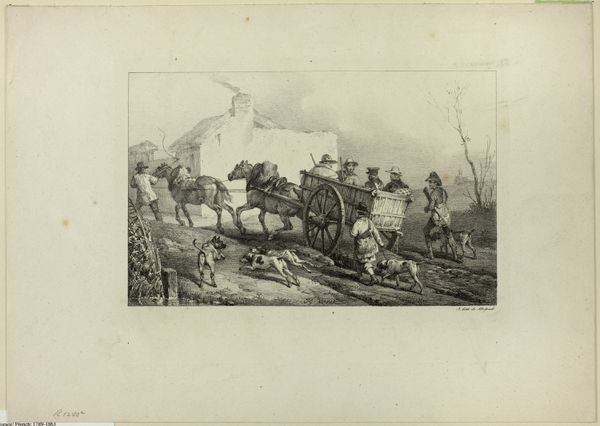
drawing, print, graphite
#
portrait
#
drawing
# print
#
romanticism
#
graphite
#
genre-painting
Dimensions: height 428 mm, width 577 mm
Copyright: Rijks Museum: Open Domain
Editor: Here we have "Huzaren te paard uit het regiment Bas-Rhin," made around 1820 by Hippolyte Bellangé. It's a drawing, a print in graphite, depicting soldiers on horseback. The greyscale tones lend a somber mood. What stories do you think are hidden in the image? Curator: The repetition of figures, especially in the distance, gives the sense of a collective identity, but also perhaps hints at a loss of individuality, a common sacrifice for patriotic idealism. Bellangé, deeply influenced by the Napoleonic era, utilizes the image of the hussar - a symbol itself, already imbued with notions of bravery and martial prowess. Note the contrast between the well-defined figures in the foreground and the hazier mass in the background. What could that signify to you? Editor: Perhaps the foreground represents a glorification of individual soldiers, whereas the background shows how individual lives are overshadowed by the scale of war? Curator: Exactly! The high hats atop the figures could also be read as symbols, visually elongating their stature, augmenting their presence – a trick used often to amplify the sense of authority. Consider the house on the left, it almost seems to provide shelter. It provides an element of comfort, however, are there any signs it is actually inhabited? Does that indicate to you anything regarding the Hussar’s circumstances? Editor: The building looks worn, abandoned almost, which maybe suggests that although these Hussars appear brave, they may lack safety, even a home? I hadn’t thought about that before. Curator: And isn't that what's so intriguing about art? Even a seemingly straightforward military scene carries deeper cultural memories and emotional undercurrents about duty and loss. Editor: Absolutely! I’m now more aware of the various details, particularly regarding historical symbolism. Curator: And how such symbols operate on both conscious and subconscious levels, embedding ideas and values within us.
Comments
No comments
Be the first to comment and join the conversation on the ultimate creative platform.
